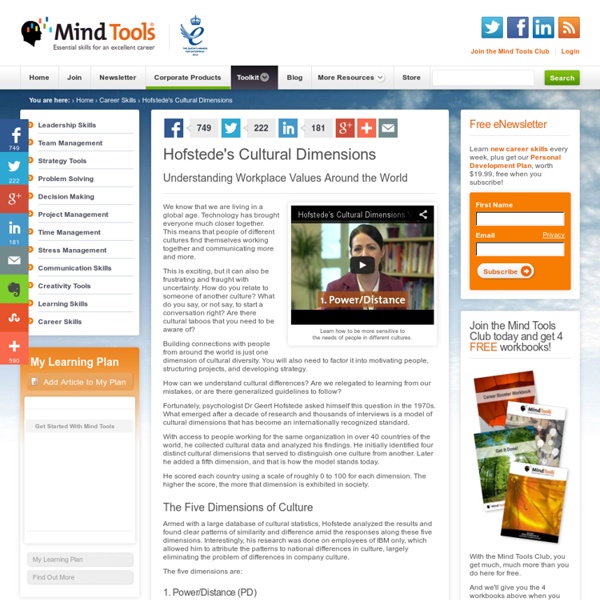Hofstede's Cultural Dimensions - Leadership Training from MindTools

Leveraging Hofstede’s Cultural Dimensions Theory to Improve the Quality of Information Operations
Hypothetical Scenario A new company commander has just taken ownership of battle space in a Middle Eastern country during an operation to enforce a peace treaty after a civil war. One of his first tasks is to explain his company’s presence and mission to the local population through local leaders. They are skeptical of the mass media messages they have received about the operation since the previous regime used the media only for propaganda. Furthermore, since the regime restricted the population’s access to basic information, they are ignorant about the world outside of their communities. Given the commanders penchant for direct talk and honesty, he sticks to talking about the facts relevant to the situation. The commander notices the local leaders appear dumbfounded and anxious after he makes his initial case. Hofstede’s Theory Successful information operations (IO) often require effective inter-cultural communications in order to inform and influence foreign audiences. Power Distance
five dimensions of culture - Geert Hofstede
In the mid 1970's, the Dutch academic, Geert Hofstede, based his five dimensions of culture on an extensive survey at IBM in which he investigated the influence of national culture. His methodology was both unique in size as well in structure. He defined organisational culture is an idea system that is largely shared between organisational members. Hofstede classified a county's cultural attitudes as five dimensions: The extent to which power is distributed equally within a society and the degree that society accepts this distribution. The degree to which individuals require set boundaries and clear structures: a high uncertainty culture allows individuals to cope better with risk and innovation; a low uncertainty culture emphasises a higher level of standardisation and greater job security. 3. The degree to which individuals base their actions on self-interest versus the interests of the group. 4.
India
If we explore the Indian culture through the lens of the 6-D Model, we can get a good overview of the deep drivers of Indian culture relative to other world cultures. Power distance This dimension deals with the fact that all individuals in societies are not equal – it expresses the attitude of the culture towards these inequalities amongst us. Power distance is defined as the extent to which the less powerful members of institutions and organisations within a country expect and accept that power is distributed unequally. India scores high on this dimension, 77, indicating an appreciation for hierarchy and a top-down structure in society and organizations. Individualism The fundamental issue addressed by this dimension is the degree of interdependence a society maintains among its members. India, with a rather intermediate score of 48, is a society with both collectivistic and individualistic traits. Masculinity India scores 56 on this dimension and is thus considered a masculine society.
Geert Hofstede | Culture
The word "culture" stems from a Latin root that means the tilling of the soil, like in agriculture. In many modern languages the word is used in a figurative sense, with two meanings: The first, most common, meaning is "civilization", including education, manners, arts and crafts and their products. The two meanings should not be confused. Human culture is the result of hundreds of thousands of years of evolution. An individual human being acquires most of her or his programming during childhood, before puberty. Today's world population is divided into some 200 nations. Many of us spend a large part of their time in organizations. Entering an occupational field like nursing or ICT implies acquiring a degree of mental programming. Gender differences are not usually described in terms of cultures.
Overcoming Cultural Barriers to Change - Change Management Training from MindTools
Moving to a High Performance Culture How will you get round the barriers? © iStockphoto/Inok How does your organization approach change? Do people respond with a sharp intake of breath when they first hear about a proposed new initiative, and then go on to try and find reasons why it won't work? Or do they react by saying things like "What a great idea, and we could also.." Corporate culture is a powerful force that runs through every organization. When successful change is the desired outcome, these cultural factors play a very important role. Effecting change is difficult at the best of times. It is worth remembering here that while culture issues can present barriers to change, they can also support change and goal achievement. There is no such thing as a perfect culture. The Characteristics of High-Performance Cultures By definition, one of the main differences between high-performance cultures and low-performance ones is... ... for the complete article: Join now for just $1, first month
Related:
Related:



